What Is In App Advertising
In-app advertising is an effective monetization strategy for mobile publishers, in which app developers get paid to serve advertisements within their mobile app. This helps publishers keep their content free for users, boosting downloads while earning easily scalable revenue. Not only do apps drive mobile usage, but also drive global media consumption. This makes in-app advertising a vital marketing channel for both brands and agencies. With sophisticated contextual and iOS 14 compliant targeting the in-app environment also allows advertisers to reach relevant and engaged users.
Preferred by Consumers
Superior Data
More Campaign Control
Mobile Websites vs. Mobile Apps
Mobile websites and mobile apps share many similarities. Both help DSPs, marketers, and advertisers reach engaged audiences on their mobile devices. Mobile adsapps offer an engaging and dynamic environment for advertisers to capture consumers' attention and encourage them to view and interact with their content. There are some key differences, though.
Here are some of the key differences between mobile websites and mobile apps:
| Mobile Websites | Mobile Apps | ||||
|---|---|---|---|---|---|
| Cookies |
| Device ID | |||
| Web activity (e.g. shopping habits, favorite websites, etc.) |
| GPS location, device type, OS, gender, age, wireless carrier | |||
| Vulnerable to in-browser ad blockers |
| Ad blocking technology has not advanced to universally block in-app ads | |||
| 52 minutes |
| 3 hours 14 minutes |
Consumers Spend More Time In-App
Apps are capturing an increasing amount of consumers' mobile-device attention. While mobile apps continue to gain popularity, there is still a disparity between the amount of time that people are spending in-app and the number of ad dollars allocated to this medium.
Unlike desktop or laptop computers which might be shared, mobile phones are usually only used by one person. This means that the apps on a particular device are closely connected to the personal life and daily habits of the device owner. This also makes the in-app environment an ideal place for advertisers to create effective and personal advertising touchpoints without compromising iOS 14 privacy protections.
Measuring In-App Ad Viewability
In-app advertising, or any advertising for that matter, can only be effective when it is viewed by real people (and not by bots). In the mobile world, an ad can only be considered viewable if the ad content is within the viewable area of the app or mobile website for a minimum period of time.
To provide an industry standard for measuring viewable mobile ad impressions, the Media Rating Council (MRC) published the "Mobile Viewable Ad Impression Measurement Guidelines." According to the guidelines, a mobile display ad impression can only be considered viewable if it fulfills the following requirements:
- Pixel requirement: At least 50% of the advertisement's pixels (density-independent) must be on an in-focus browser or a fully downloaded, opened, and initialized application in the viewable space of the device.
- Time requirement: The duration in which the pixel requirement is met must be at least one continuous second, post ad render. This time requirement applies equally to news feed and non-news feed environments.
There are currently several organizations and industry standards that are working to ensure that objective and fair viewability measurement is available in-app:

The IAB Tech Lab is also leading the development of a new technical tool for in-app mobile viewability measurement, the Open Measurement Software Development Kit (OM SDK), which will be the first industry-approved open-source viewability measurement SDK. As a leader in the in-app space since 2005, Smaato is an active participant in the Open Measurement Working Group (OMWG), which is reviewing, testing, and maintaining the SDK. This new viewability measurement standard will be the next step in ensuring a high-quality, transparent advertising ecosystem. Our own SDK, NextGen SDK, comes with open measurement right out of the box, to make it even easier for our partners to measure success.
Mobile Programmatic Supply Chain
Mobile programmatic advertising is an automated process of buying and selling mobile media at scale, making it an important component of any in-app advertising strategy. The mobile programmatic industry is a complex environment that requires trust and transparency between all supply and demand partners. This is especially important for advertisers to maintain control over their creatives as they move through the programmatic supply chain and are ultimately served on a user's mobile device.
The diversity of programmatic ad technology services has expanded rapidly over the past several years, as the industry responds to evolving marketplace dynamics. These third-party tools provide an unprecedented level of control for both advertisers and publishers. The increasing complexity in the programmatic supply chain, however, has made it difficult for advertisers to keep track of which parties are involved in the delivery of their creative and which fees are taken by these parties along the chain.
The first step in improving transparency is to deconstruct the individual components of these ad-technology layers and their value propositions. Here are the main players in the mobile programmatic advertising industry:

- Agency: An advertising agency is typically an independent organization that handles advertising, promotion, and marketing for multiple clients. In order to conduct large-scale mobile programmatic transactions for their clients, agencies can work with a trading desk or directly with demand-side platforms (DSPs).
- Trading Desk: Many advertising agencies have a dedicated team for executing online media buying, which is referred to as a trading desk. Trading desks can use either a proprietary technology or a DSP to buy inventory.
- Demand-Side Platform (DSP): A DSP allows buyers of digital advertising inventory (whether trading desks, agencies, or advertisers directly) to manage multiple ad exchanges via one interface.
- Ad Exchange: An ad exchange is a technology platform that facilitates the buying and selling of advertising inventory between DSPs and SSPs.
- Supply-Side Platform (SSP): SSPs connect directly with publishers, enabling them to make their inventory available to multiple ad exchanges, DSPs, and advertisers in order to maximize revenue.
In-App Ad Formats
Apps offer a dynamic environment to seamlessly integrate advertisements with in-app content. This turns mobile ads from an unwelcome distraction to a relevant suggestion that can actually enhance the users' in-app experience. When choosing the right ad formats for an in-app advertising campaign, advertisers should consider how consumers use their device, and how they will experience the ad.
Video Ad Formats
Mobile video advertising is an integral part of a successful advertising strategy to engage audiences on the small screen. By leveraging the unique qualities of mobile devices, mobile video ad formats can effectively deliver engaging brand messages.
Interstitial Video Ads
Interstitial video ads are full-screen videos that appear during a natural break within the app — for example, after completing a level in a game. This engaging ad format is attractive to advertisers because it fills the user's entire screen, grabbing their attention and allowing the advertisement to tell a story.
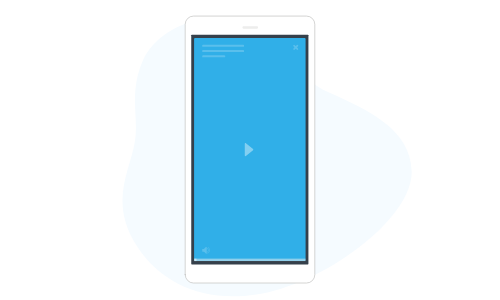
Rewarded Video Ads
Gaming apps can integrate rewarded video ads as an integral part of their product, enabling users to gain virtual goods or currency that advance the game in return for watching a video ad. Rewarded video is an effective method for advertisers to gain informed clicks and high-quality conversions. Since this ad format is opt-in, it also has the highest viewability rates of any mobile ad format.
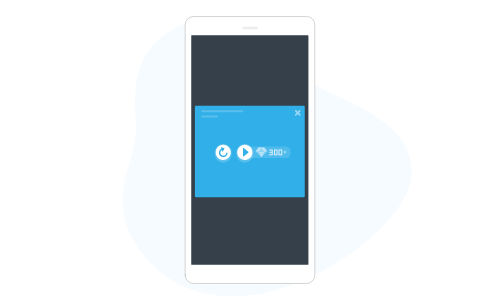
Outstream Video Ads
Outstream videos are placed within the in-app content (i.e. between images or paragraphs of text), and the ad auto-plays when it reaches the viewable area of the app. Since these ads only play when they are visible to the user, they also have high viewability rates.
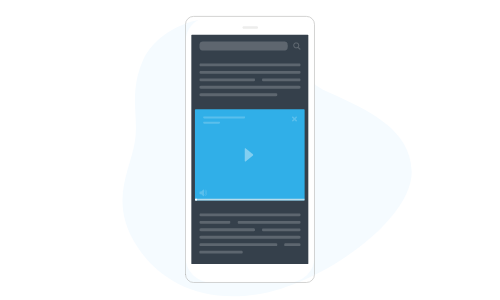
Instream Pre-Roll Video Ads
Instream pre-roll videos play before, during, or after video content within the app's native video player. This ad format is popular among publishers that offer video content within their app. Since mobile video viewership is growing rapidly, pre-roll video ads are an increasingly popular and effective way to grab the attention of consumers.
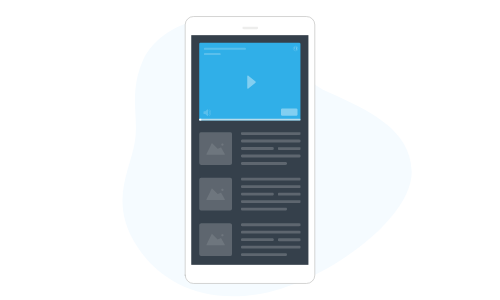
Previous Next
Display Ad Formats
In-app display ads provide advertisers with a flexible way to scale their campaign reach within the in-app environment. These formats provide users with a discovery experience that is tailored to the unique context of the app and the behaviors and interests of the user.
Native Ads
As the name suggests, Native ads fit the native look and feel of non-advertising content units within an app. This creates a highly-effective and non-disruptive user experience where advertisements feel like native in-app content and are perceived as a welcome suggestion or idea.
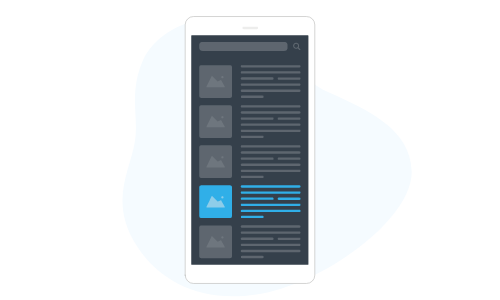
Interstitial Ads and Splash Ads
Interstitial display ads appear full-screen during a content break within the app. Since these ads fill the screen, they are one of the most engaging in-app display ads. Splash ads fill the app loading screen, providing an eye-catching experience without interrupting the in-app experience.
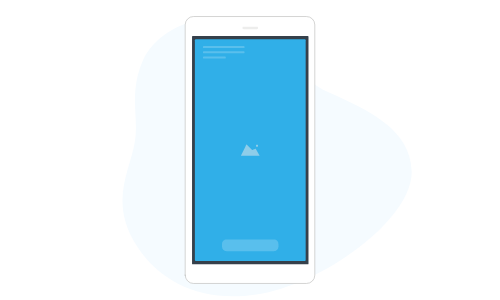
Banner Ads
The original mobile ad format is the Banner ad. Although small in size, these ads have a huge reach, which makes them an effective option for creating brand awareness.

Medium Rectangle Ads
With a larger visual impact than traditional banners, Medium Rectangle ads offer high viewability at a low cost.
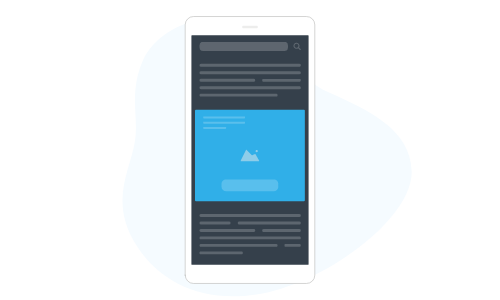
Previous Next
Best Practices for In-App Advertising Success
With ever-increasing usage and superior technical capabilities, it's clear why advertisers should invest in in-app advertising — now it's time to look at how to best invest advertising budgets in-app.
Here are some best practices for in-app advertisers, which advertisers can apply to their next in-app advertising campaign to optimize their strategy and maximize campaign performance:
- Know Where Your Ads Go
Familiarize yourself with the mobile programmatic supply chain and understand the role of each participant.
- Choose Supply Partners Wisely
Many premium publishers only work with a small selection of supply-side platforms (SSPs). Working with SSPs that have direct relationships to high-quality inventory is the best way for advertisers to maintain control over their ads and get the best return on investment (ROI).
- Select Banners for Reach
For a low-cost, large-scale in-app advertising campaign, no ad format can beat the classic mobile Banner ad. These versatile ad units maintain their popularity among app publishers due to their ability to easily fit into the in-app environment, without being intrusive to the user experience.
- Make an Impact With Interstitial Ads
Full-screen ads make the largest visual impact on the user, which means that these formats are effective for engaging consumers during natural content breaks within the in-app environment.
- Maximize Engagement With Interactive Video Ads
Interactive video ads are a great way to encourage users to engage with a creative and complete the desired action. VPAID (Video Player-Ad Interface Definition) is a video ad delivery format that allows advertisers to program interactive features directly into ads. It also allows an advertiser's preferred viewability tracking solution to be implemented, regardless of whether the specific measurement provider is integrated into an app's SDK.
- Gain High-Quality Conversions With Rewarded Video Ads
Another effective method for gaining informed clicks and high-quality conversions is to use rewarded video ads. Users opt into engaging with the ad in exchange for an in-app reward. As a result, this format has some of the highest viewability rates, and it can even help improve brand sentiment.
- Take Advantage of Private Marketplace and Programmatic Deals
Buying inventory through programmatic deals creates a direct relationship between an advertiser and a publisher, allowing advertisers to know exactly who is seeing their ad and in which context.
- Use Top App Categories to Reach Engaged Audiences
The personal nature of the mobile device makes it ideal for reaching highly specific audiences. Social, News, and Gaming are three of the app categories with the highest mobile user penetration, which make them effective for reaching a diverse base of engaged users.
- Reach Users of All Ages in Gaming Apps
Gaming apps are universally enjoyed across all age groups. Users of all ages turn to game apps to relax or challenge their friends. With nearly 50% of the US population playing mobile games, gaming apps are an effective medium for reaching diverse audiences within the apps they love most.
What Is In App Advertising
Source: https://www.smaato.com/guide-to-in-app-advertising/
Posted by: desmondbaccough.blogspot.com

0 Response to "What Is In App Advertising"
Post a Comment